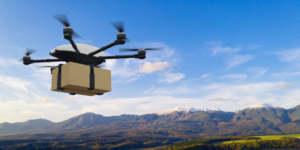Empowering Functional VPs: Strategic Guidance for Sustainable Cold Chain Success
In the highly regulated and complex world of biopharmaceutical drug products, ensuring the integrity...
read Details

Recently, while attending the Allogenic Cell Therapy Summit in Boston, MA, Carson was at a small roundtable discussion when he started describing Modality Solutions’ strategies for assessing the impact of transportation on C&G therapies. During which, he was literally handed a microphone to broadcast his insights to the entire conference. We sat down with Carson, Senior Consulting Engineer, to explore insights around the hot topic of assessing cellular damage after rugged transport, especially to remote regions of the world. Here are his thoughts:
Carson: There’s discussion around how to deliver cell therapies to developing countries, and how to deliver efficiently and effectively in a place that lacks significant infrastructure. At Modality Solutions, part of the work we do is analyzing the potential impact of non-standard modes of transportation for these therapies.
For instance, how does shipping via a drone impact a cell therapy? What about speed boats or even transportation by camelback?
When we started this discussion at a recent conference, it drove a surge of interest. There’s definitely a common challenge in managing delivery of therapies in areas in the world that lack roads and infrastructure, especially when products require storage at ultra-cold temperatures.
Drones are a particularly exciting topic. Modality Solutions is handling a lot of research on the use of drones for shipping therapies, to ensure there is no negative impact from the shipping method. I think there’s a lot of excitement around drones because they’re new and innovative territory for the pharmaceutical industry.
Drones aren’t just beneficial for developing companies, but even valuable for developed countries where therapies need to get to a hospital within time constraints. We know one company that had a cell-therapy that is administered to patients that had just suffered strokes. The therapy required dosing within 12 hours – this is where delivery modalities are becoming advanced. There’s certainly a need to conduct very quick shipments to the hospital.
There’s also a need to be able to ship therapies that have already been thawed. Part of the process of delivering a cell therapy to a patient is to store it extremely cold on liquid nitrogen at -150 degrees celsius (or less). The thawing process for these products is a lot more complex than just setting it out, or putting them in a refrigerator and waiting for them to thaw. There are certain zones that have to be thawed more quickly than others. It’s a very complex process that’s best left in the hands of the manufacturer, as opposed to the doctors at the hospital.
Once you thaw a therapy, you only have a few hours before that therapy is no longer viable. So if you could deliver a shipment to a patient within hours, then you can theoretically thaw at your own manufacturing center and then ship it to the hospital and have it administered immediately. That’s where drones could have a big impact…to be used instead of your typical overnight UPS shipment, which will be beyond your time constraints.
Carson: The typical test for this is cell viability…looking at the cell death. There are also certain markers that a cell may display that they may not be dead yet, but they’re going to die soon.
So you could test for those markers or test for cell viability at different time points. You’re basically testing to see how many cells are alive and how many cells are not. When it comes to shipping, there’s not a lot of knowledge on the impact of vibration and shock on its therapies themselves.
There have been studies performed by the US military looking at how shock and vibration impact red blood cells, but as far as cells similar to CAR-T (used for cancer treatment), there isn’t really any data on the impact of vibration and shock on those cells. there could be a scenario where you have cells that are dying on the last shipment to the patient, and you would never know. You’re not testing for cell viability at that point, in the last mile shipment. What Modality Solutions can do to help is use our Transport Simulation Lab, where we evaluate the impacts of shock or vibration on the cells themselves. We can basically simulate the transportation environment and then test for viability to see if the cells survived the transportation, including the ‘last mile’.
Carson: It’s really any mode of transportation that doesn’t use a paved road, even different helicopter models can have an impact. Modality Solutions is conducting research to replicate all these means of transport and test them in a lab. There’s a potentially infinite list of transportation types that could occur, and having to test all of those in the field for every single therapy would be exhaustive. Our goal is to find a way to replicate different transportation types in a lab and help identify which modes of transport might be more strenuous on the therapy itself.
One of the most interesting transportation methods is speedboats. When transporting via speedboat, you’re repeatedly hitting the water, and that constant motion applies a strenuous environment to the therapy. We’re particularly interested in how we’re going to replicate that type of vibration and shock profile.
Carson: One method to incorporate the thaw time into the delivery time. And that’s a problem that still needs to be solved. A lot of these hospitals don’t have liquid nitrogen storage and other critical staples for temperature control. I think the future will define new therapies that could be thawed during transport, and then immediately administered to the patient.
During the conference, this was a big pain point. How do we automate the thawing process and ensure that we don’t have any human error factors? There’s always human error to be considered. And with these complex thaw processes, it’s easy to make an error.
Some people not following the procedure are just leaving the cells on the bench top to thaw. Or they flail them around in the hot water to thaw the vial. Avoiding that is certainly ideal. And developing some mechanism that could thaw cells during transport…that’s where the industry is heading.
Overall, now that patients are accessible globally, the science of transportation needs to catch up to ensure the stability and viability of the C&G therapies. Until then, it’s the responsibility of companies like Modality Solutions to provide advanced transport simulation and cold chain engineering, to map the supply chain and demonstrate robustness to supply chain hazards for these essential therapies. It’s why we test 5 variables – temperature, pressure, shock, vibration and humidity – by designing simulations that mimic the various transportation methods, especially in remote areas. This information is critical to properly meet the needs of distant patients, and the companies that utilize this approach are better prepared for global markets.
In the highly regulated and complex world of biopharmaceutical drug products, ensuring the integrity...
read Details
10 Common Misconceptions of Cold Chain Validation, as Explained by AI, commentary by Gary...
read Details
When it comes to ensuring the integrity of temperature-sensitive products during transit, choosing the...
read Details